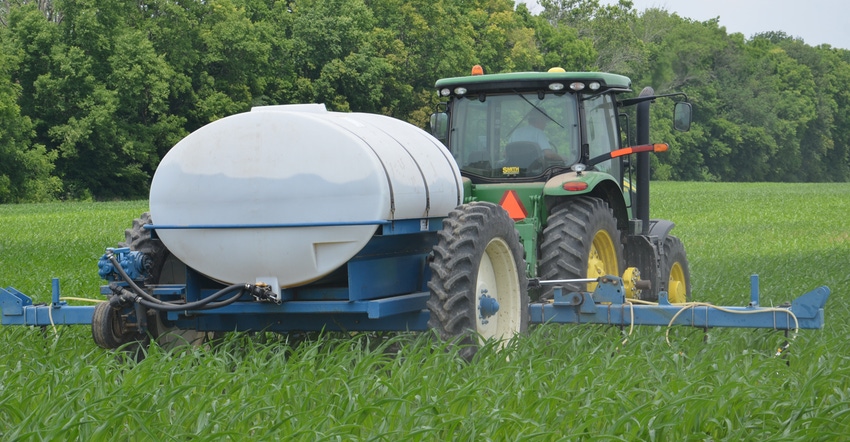June 20, 2019

Perhaps you sidedressed nitrogen this year because you didn’t have a choice, but your normal program is to apply N before you plant.
Getting farmers to think about the benefits of applying nitrogen when plants need it is just one goal of the Indiana Agriculture Nutrient Alliance. Formed in late 2017, IANA is setting concrete goals that would not only help farmers use nutrients more efficiently and save money, but also keep more nutrients out of streams. It sounds like a win-win.
Ben Wicker, executive director of the alliance, housed at Indiana Farm Bureau in Indianapolis, says IANA is a collaboration of farm groups; local, state and federal agencies; and non-ag groups interested in keeping nutrients out of water and benefiting farmers.
“We see a window of opportunity over the next few years where we can figure out how to do these things voluntarily,” Wicker says. “Farmers worry about keeping nutrients on their fields so they benefit crops and produce more profit. Others worry about what happens when they wind up in the Lake Erie Basin or the Gulf of Mexico.
“If we can’t figure out how to control nutrients voluntarily, regulators may do it for us, and we may not like the consequences,” he says. In other locations, such as parts of Ohio, stringent regulation is already happening.
Concrete goals
IANA developed goals for three general areas: planning for nutrient applications, nutrient applications themselves, and protecting the soil and nutrients once they’re applied. Wicker refers to this as “Plan, Apply and Protect.” Here are key goals:
Conduct regular soil sampling. By 2025, the goal of IANA is for 100% of Indiana farmers to have a regular soil sampling program, Wicker says. Based on a 2014 survey, about 75% of Indiana farmers already complete routine soil sampling.
Develop a nutrient management plan. Another goal is for farmers with soil sampling programs to develop nutrient management plans, Wicker says. Based on the survey in 2014, only 27% said they developed a nutrient plan. “We think there may be some semantics involved here,” Wicker explains. “If they’re working with an agronomist or a certified crop adviser to go over their soil sampling results and determine what to apply, that’s essentially working toward having a nutrient management plan. It’s likely some thought a nutrient management plan was something formal.”
Apply nutrient in season. The goal by 2025 is for 75% of farmers to apply fertilizer at planting or in season. “Nitrogen is our biggest concern,” Wicker says. In 2014, 50% said they applied most fertilizer at planting or after planting.
Avoid winter applications. IANA hopes that by 2025, people will apply manure or fertilizer on snow-covered or frozen ground only as a last resort. Large confinement livestock operations are already required to comply with this goal of avoiding winter applications.
Grow more green cover. IANA hopes to see 40% of Indiana cropland covered with living cover over winter by 2025. In 2014, the number was about 10%. “Cover crops will be a big part, but it includes wheat and other crops,” Wicker notes.
Minimize tillage. IANA wants 25% more acres in minimal tillage and 10% more in no-till or strip-till. “Reducing soil erosion is still an effective way to keep soil and nutrients where they have value,” Wicker concludes.
Comments? Email [email protected].
You May Also Like




